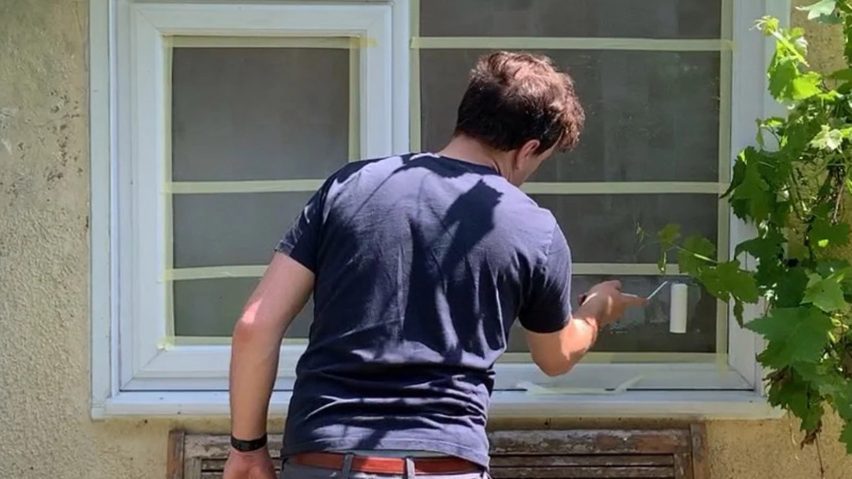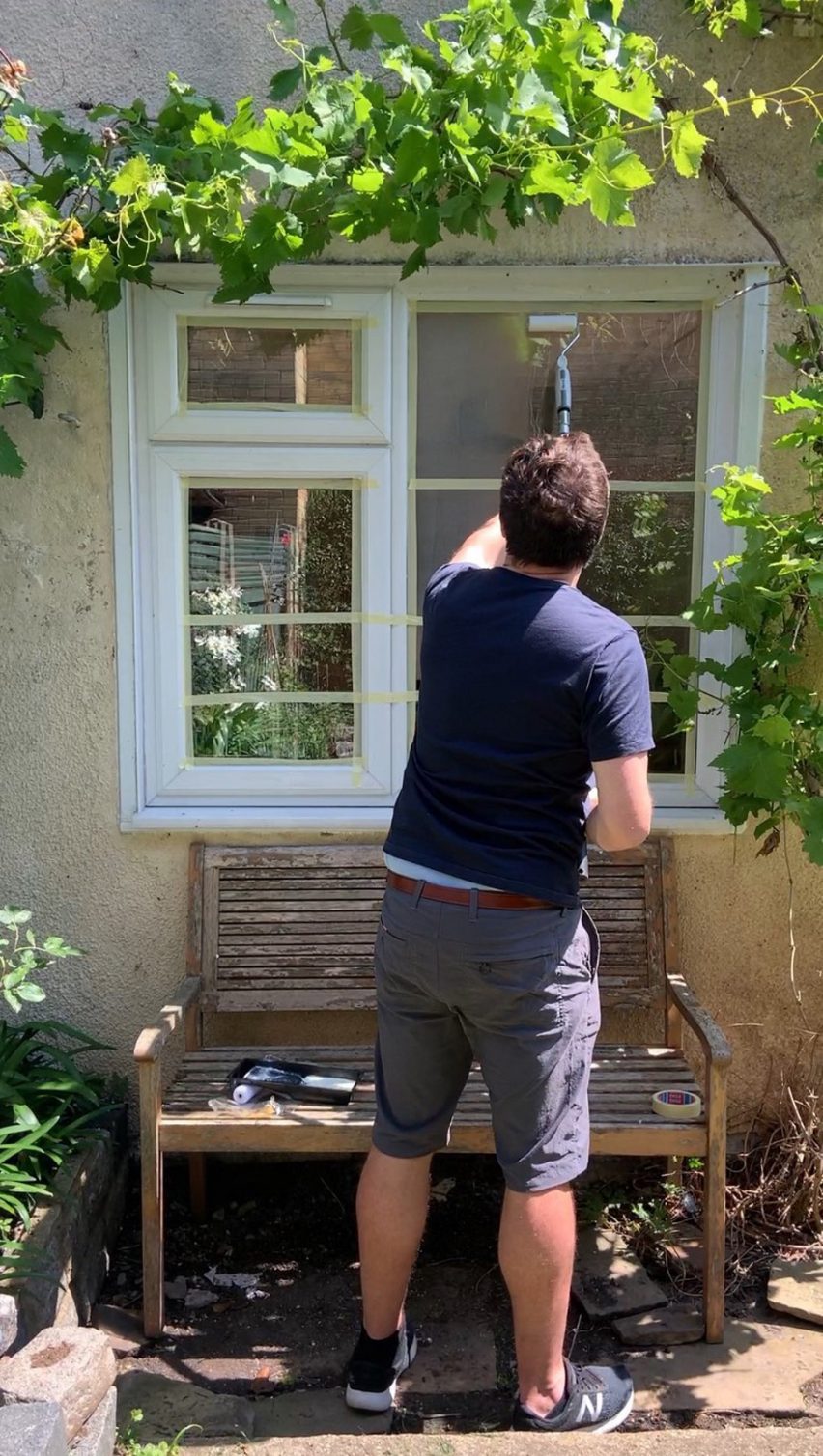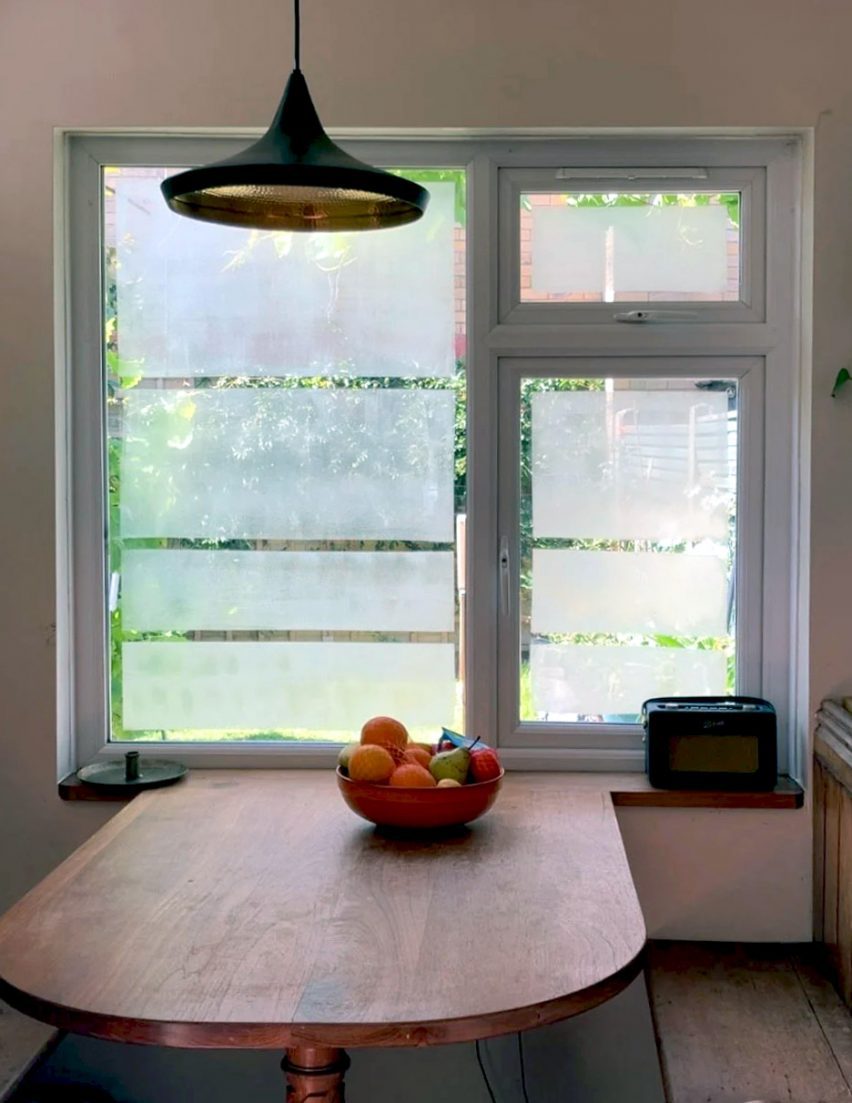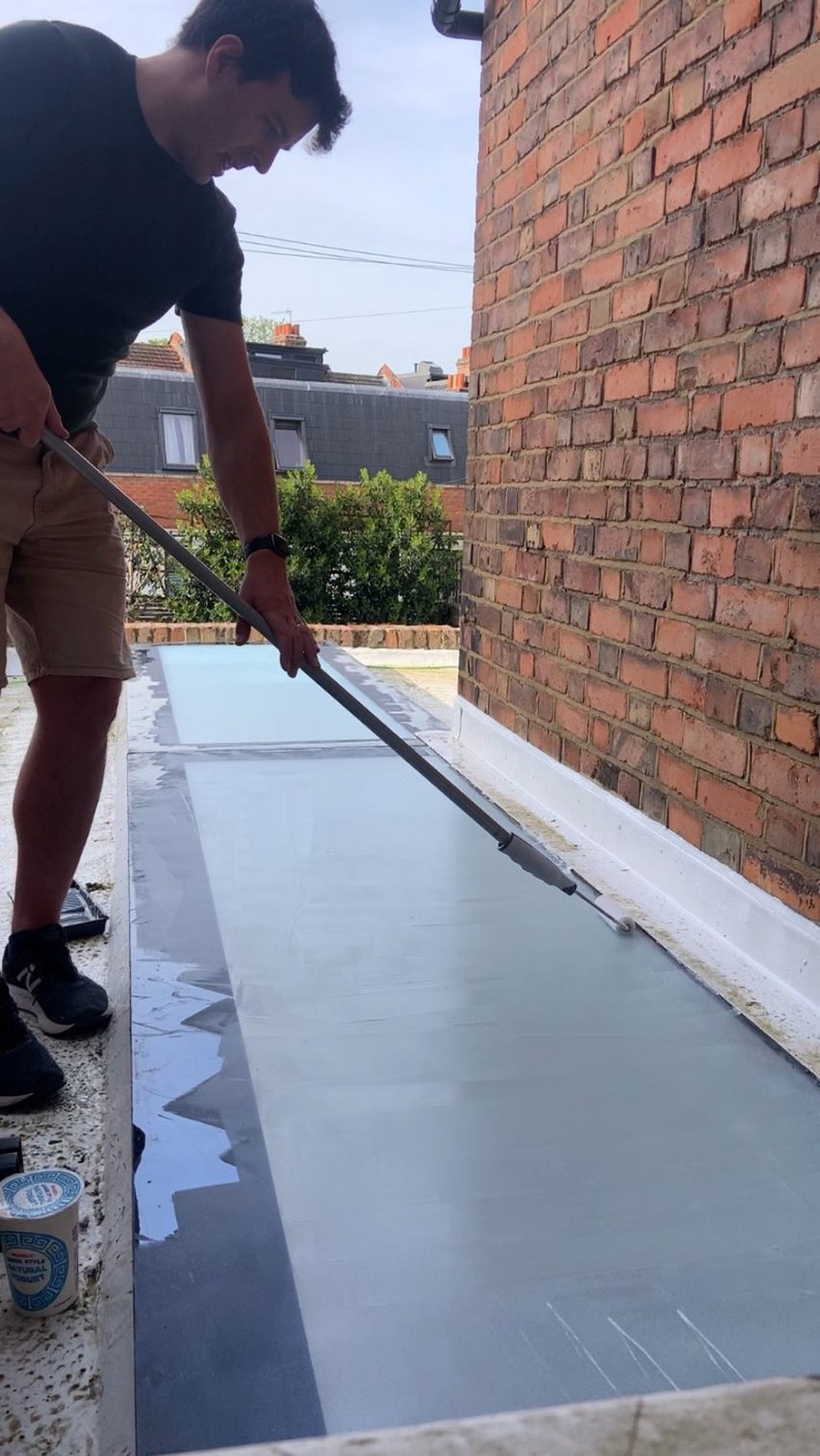
Yoghurt window coating proposed as emergency heatwave measure
British engineer Tom Greenhill is proposing painting the outside of windows with yoghurt as a low-cost, low-energy solution to keep UK homes cool during heatwaves.
Painted on with a roller, yoghurt dries quickly and creates a fritted glass-like effect that Greenhill says should reflect light and heat in much the same way as other energy-efficient window coating products.
Greenhill admits that this may seem like a "totally eccentric idea". But based on his own experiments, he is yet to see a downside to the strategy.

He says the yoghurt is easy to apply, doesn't smell, doesn't attract insects, doesn't degrade unless there's heavy rain and can be washed off simply with a cloth and water once the heatwave is over.
Greenhill is a chartered engineer and environmentalist, specialised in whole-life carbon reduction in new builds, who recently launched a Heatwave Toolkit cataloguing low-cost DIY cooling solutions.
His view is that, while there are some great products and architectural interventions on the market that can retrofit buildings to ward off heat, most are currently inaccessible to many people.

"I've put green roofs and all these landscaping elements in, specified external shading, deep window reveals, moving external shades," Greenhill told Dezeen. "These are all fantastically useful, but most people don't have the agency to do that."
He sees yoghurt as an alternative solution for renters, people who live in conservation areas that prohibit changes to their buildings or people who simply can't afford specially designed products.
Greenhill particularly has the UK in mind, as the country is regularly referred to as having the oldest housing stock in Europe – none of it built for the increasingly long and intense periods of heat brought on by climate change.
"What I've realised through my work is not only do we need these temporary adaptations – because it's not realistic to expect all of the housing to be able to adapt – but they need to be rapidly deployable, they need to be incredibly cheap and they need to be really light touch," he said.
"They also need to be really effective because the scale of the problem is massive and the risk of a really intense, long heatwave clogging up hospitals and causing real problems is really significant."
Greenhill got the idea for the yoghurt coating from an anecdote he'd heard early in his career when he was working at the engineering firm Max Fordham.
During the renovation of London's Geffrye Museum in the 1990s – now the Museum of the Home – Fordham reportedly suggested pouring yoghurt over the building's glass roof after the client complained about it trapping heat in summer.

While Greenhill is unsure whether the anecdote is true, he continued to think about it over the years and consider whether it would work.
Recently, while thinking up plans for the Heatwave Toolkit, he decided to investigate and found that there is precedent for using yoghurt as a window coating in the US, with people having used it to create privacy screens and window art.
In both of these instances, the painters applied the yoghurt to the inside of the windows but documented the results dried to a robust finish that seemed to be permanent until washed off.
Applying any coating to the exterior of the window is more effective for cooling, Greenhill said, as it stops the sun's rays from breaching the thermal envelope and getting trapped inside the house.
For a test run on his own home, the engineer found that using a brush was unsuccessful but applying the yoghurt with a roller gave a thin coating with a texture reminiscent of ceramic frit – "a product I've specified on building projects to limit solar gains".
He tested a variety of yoghurts – including dairy and oat – and found they all worked much the same, with only about a tablespoon of product required per window and lower fat yoghurts giving a more translucent effect.
Greenhill is now trying to publicise his yoghurt trick, both in the hopes of informing the public about heatwave preparedness and also securing funding for laboratory testing that would put a clear figure on the technique's effectiveness.
"Even if it was half as effective as ceramic frit, it would be an absolute game changer in terms of keeping the heat out of homes," said Greenhill.
While Greenhill's yoghurt method may not look like a conventional design solution, some experts argue the profession is increasingly shifting towards adaptation and making do in response to environmental crises.
Futurist Sarah Housley stated in a Dezeen column this month that redesign, reuse and behavioural change are increasingly the starting point for design as opposed to selling a new product.